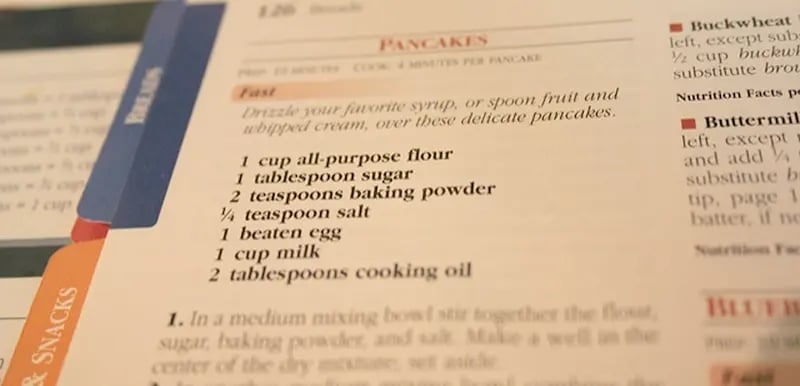Exus Blog Article
A Recipe for Reduced Delinquency and Improved Outcomes

When a customer moves into the delinquency phase, it’s harder to get them to pay off debt. That means prevention is a top collections strategy. After all, stopping customers from entering delinquency improves outcomes faster than recovery strategies.
Could your organization do more to prevent delinquencies, rather than deal with them after they happen? If so, there’s a tried-and-true recipe that modern collections departments use to reduce delinquencies. Keep reading to learn all its ingredients.
1. Manage Collections in Phases
To start, you need to manage collections accounts in phases. This makes it easier to identify when customers are in danger of delinquency. It also helps you segment customers, separating those who are not yet delinquent from those who are.
This is important because each phase requires a different approach if you want to maximize the odds of success. A customer earlier in the process might require a softer approach, while those later in the process might need more pressure.
There are four main collection phases:
- Soft
- Pre-litigation
- Litigation
- Recovery
In soft and pre-litigation phases, it’s best to use a customer-level approach that focuses on relationships. In the latter two stages, the focus must switch to minimizing loss and protecting assets, which is best accomplished with an account-level approach.
2. Present the Right Offer at the Right Time
Train your collectors to present the right offer at the right time. What’s “right” will depend on the customer and his or her situation. A one-size-fits-all approach is no longer the best way to collect. Organizations that adapt their collections approach the needs of their customers to see more success.
To do this effectively, collectors should segment customer portfolios using static and behavioral analytics. Static metrics to measure may include product type, customer exposure, and account balance. Behavioral metrics include items like kept promise ratio and time since the last max bucket. Using both ensures you send the right offer, increasing the likelihood that the deal will close.
The result? Increased self-cure rates, reduced costs, happy customers, and stronger collector-customer relationships.
3. Use Multiple Contact Channels
Cold-calling customers are not the only option to reach people anymore. In fact, it’s often an undesirable channel. This is because consumer communication behaviors have changed. With numerous online options available, consumers increasingly want to communicate via multiple channels on their own time. Therefore, the way you do business has to change as well.
Your department should be using multiple channels to contact customers such as:
- Mobile banking apps
- Self-service
- SMS
This lets you reach out to customers via their preferred communication channels, which can positively impact self-cure rates and customer satisfaction.
4. Stick to Collections Scripts
Collections scripts help collectors convey a consistent, effective message no matter whom they’re communicating with. Customers occupy different phases during the collection process. Each phase requires its own communications approach, and scripts ensure collectors deliver quality service and overcome obstacles unique to each stage.
Before speaking with a customer, collectors can identify previous approaches and then decide how to move forward on a case-by-case basis. Scripts make this a more efficient process by outlining the best way to approach any debt collection scenario.
5. Provide Your Collectors with Incentives
Collectors are the front-line personnel responsible for day-to-day collections' success. Personnel performance is essential to organizational health. But, personnel costs are the greatest expense for a department.
That’s why incentives are so important. Managers must motivate personnel to maximize their time and efforts when at work. Done right, incentives supercharge performance and help departments retain top talent.
Set specific goals for your collectors, and if they meet them within your conditions, reward them. Incentives can be monetary in the form of a raise, gift card, or bonus. You can also incentivize your collectors with a nonmonetary reward such as extra vacation days, gifts, or a better parking space.
6. Embrace the Power of Technology
Technology is a way of life for every industry, and debt collection is no exception. Your department must be willing to invest in a solution that allows collectors to connect with customers, reduce delinquency and improve outcomes.
With the right solution, your collectors have the power to bring the results you want and prevent customers from slipping away.
Debt collections software centralizes all management materials including communication scripts. It also streamlines each stage of the collections process, from pre-delinquency to litigation. Embracing this technology will hold your department accountable and help it become more productive.
Before your collectors begin their collections efforts, they can prepare for better results. Using the tips discussed in this blog post, you’re sure to see increased collections and collector productivity.
